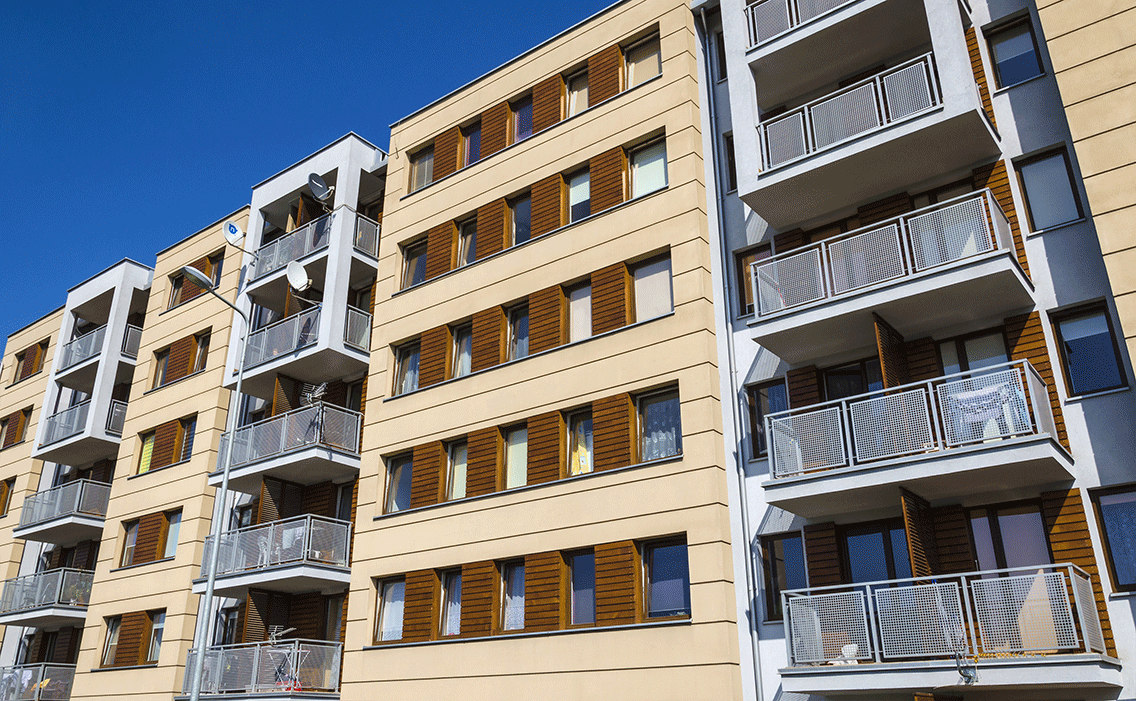Multifamily Property Investors Spent Less in 2017, but Bought More Apts.

Investors spent less money on apartments in 2017 than the previous year, according to CoStar research, but bought more multifamily properties.
The math may be a little counter-intuitive, but resulted from sales in the most expensive urban infill markets dropping off as owners of newer downtown properties decided to hang on to their assets or demanded rich pricing. Yield-hungry investors, in turn, looked to suburban and secondary markets – where multifamily properties are cheaper, and older assets and workforce housing are in vogue as well.
That combination resulted in a mixed outcome in 2017 – more property trades, but less total investment in the multifamily market.
“No doubt this is the case,” says Josh Goldfarb, co-head of Cushman & Wakefield’s multifamily sales platform. “We are seeing more interest in the suburbs and secondary markets caused by overheated costs and land pricing in large metropolitan areas, combined with minor oversupply.”
CoStar’s year-end tally of apartment sales shows that $156.3 billion traded hands in 2017, down about 4% dollar-wise from 2016, when a towering $163.1 billion in multifamily sales was recorded.
But CoStar counted 34,468 property deals last year, up from the then-record high of 32,252 in 2016. And a further look at the sales bears out what many multifamily sales experts have been reporting anecdotally – sales in the ‘burbs are up, while downtown sales are off.
In New York City, for instance, apartment sales plunged from $14.2 billion in 2016 to $9.1 billion last year. That $5 billion drop in this market alone accounted for almost half the national sales total drop-off from 2016.
San Francisco saw sales of apartments fall from $2.5 billion in 2016, to $1.6 billion last year.
Meanwhile, many secondary markets saw a surge in apartment sales. Minneapolis, for instance, which posted only $827 million in apartment trades just two years ago, racked up $1.4 billion in sales last year. Orlando’s apartment sales moved from $2 billion in 2016 to $2.6 billion last year.
Blake Okland, the head of Newmark’s Apartment Realty Advisors sales platform, said the move by investors into secondary markets and older, less-expensive properties isn’t just about investors seeking higher returns in those locations and in the value-added space, it’s simply a function of what’s available in the market.
“It’s not as if there’s not institutions that want core downtown stuff, but a lot of that has traded, and you have owners who are happily holding,” Okland said. The move from core to secondary is “as much a function of what’s available as it is preference.”
Investors expect the trend to continue. A big spike in new apartment supply is predicted for the first quarter of this year. The bulk of new units are primarily located in downtown submarkets such as Boston, New York, Chicago and Atlanta and should temporarily soften rent growth and occupancy rates – and further slow property sales in those locations.
In its forecast for the 2018 multifamily market, CoStar sees smaller cities and suburbs as the most likely benefactors of investor attention.
“We’re forecasting that price growth will be greatest in fast-growing secondary markets,” said John Affleck, research strategist for CoStar. “Places like Orlando, Las Vegas and Jacksonville, FL.”
Wait! Don’t miss out on the latest insights
Sign up for Saschse Construction’s
e-newsletter below!
Featured Topics
Housing Market
INDUSTRY NEWS
Investment
Multifamily + Hospitality
National

